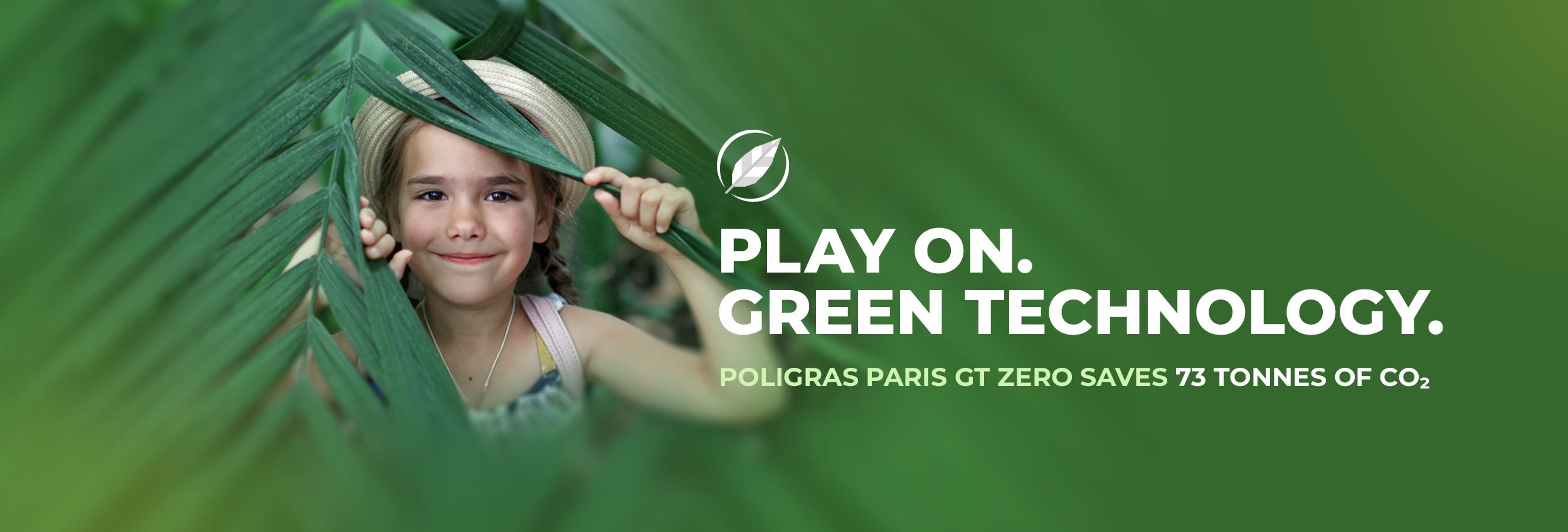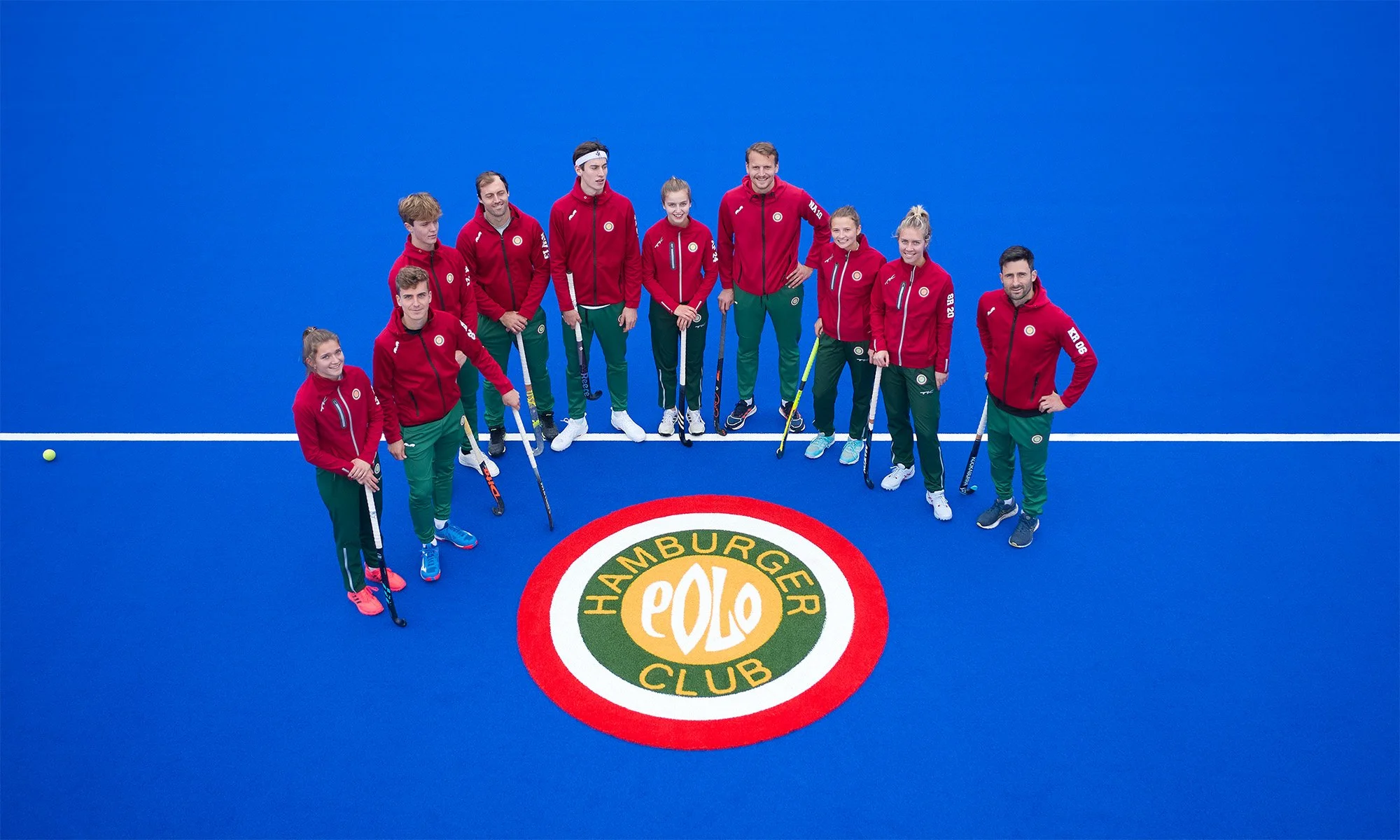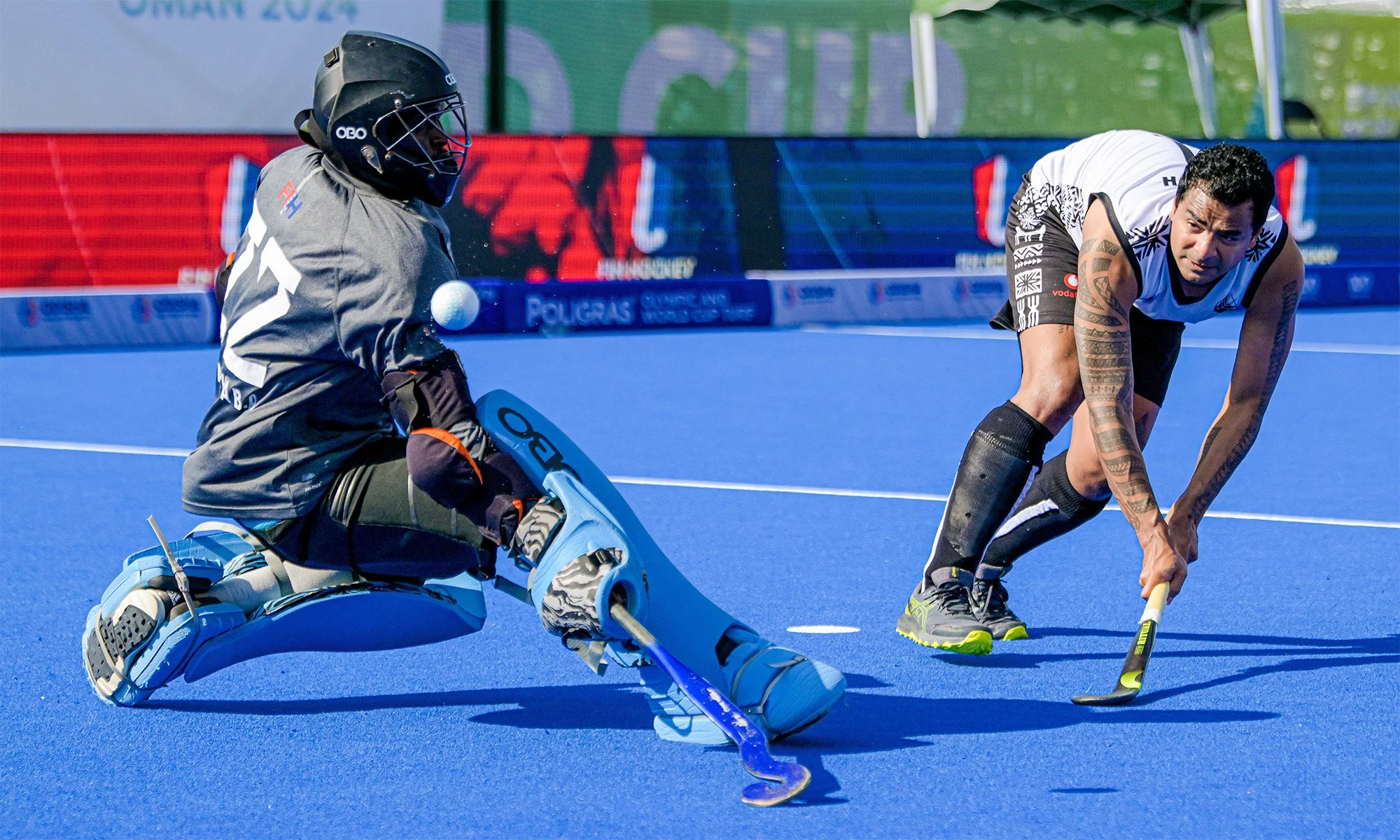Hockey is a progressive sport
A growing number of sports clubs, cities, communities and players are seeking environmentally friendly options for their sports spaces. This is not a trend but a mega transformation for the industry. Sport Group, as the world’s largest business dedicated to sport surfaces, and owner of Poligras is committed to leading with environmental innovation.
Green Technology is Sport Group’s platform to integrate and implement our future sustainability R&D, products, services, and IP.
Our Green Technology products combine advanced expertise from the plastics industry with the climate-protecting benefits of renewable raw materials, alternative technologies and recycling.
Paris – hockey’s first carbon zero hockey turf
Poligras Paris GT zero, developed for the Paris Olympics, is the world’s first (and only) carbon zero hockey turf and has become a hockey hit product globally. With 80+ installations around the world, it is testament to the global hockey community’s commitment to embracing a more sustainable future for the sport.
Paris 2024 Olympics on Poligras Paris GT zero
HC Eindhoven’s twin Poligras Paris GT zero turfs were installed at the Dutch club in 2024.
Every Poligras Paris GT zero turf saves the equivalent annual emissions of 17.4 cars
80% of our Paris turf is made from sugarcane as a bio-raw material, and manufactured with green energy. The carbon footprint of the Poligras Paris GT zero turf has been certified as climate-neutral by Berlin-based DAkkS accredited consulting company GUTcert.
A single turf saves 73 tons of CO₂ compared to a conventional turf.
Based on US Environmental Protection Agency’s ‘Greenhouse Gas Equivalencies Calculator’ this is the equivalent to the annual emissions of 17.4 cars.
Paris Olympic turf required 63% less water than London 2012
Thanks to Turf Glide, a new and proprietary technology which reduces surface friction, water usage stats from the Paris Olympic Games show a huge decrease in the amount of water required by the Paris turf.
The Turf Glide tech allows the turf to meet the FIH Innovation standards for dry hockey and resulted in a 63% water usage reduction between the London and Paris Games. The total volume of water used in Paris would only fill 20% of an Olympic swimming pool.
Namibia’s Walvis Bay Gymnasium Primary School installed the Poligras Paris GT zero in 2024
Unique Play Wet / Play Dry cross-over performance
When dry, the Poligras Paris GT zero plays better than sand and only requires 1mm of water across the surface to achieve Olympic level performance and meet FIH skin friction requirements.
“The consistency of the turf is brilliant and better than most irrigated turfs in my experience… the whole turf plays consistently”
For many hockey locations the atmospheric moisture, such as light rain or dew on a cool night, will be enough to transform the turf to Olympic level performance. For clubs and facilities who have an irrigation system and want to use it, they will use significantly less water.
Whether playing wet or dry, clubs benefit from meaningful savings on water and environmental costs without sacrificing performance.
“Even on the dry turf we can train almost equally, which gives us more flexibility and at the same time a consistently higher level of training.”
Hamburger Polo Club was the first to install the iconic Poligras Paris GT zero turf in October 2022
A turf transformation for hockey
Hockey, at all levels, needs turfs that supports the modern skills such as sweeps, slaps, drags, 3D and aerial hockey, as well as playing better for the environmental. A club can now choose a carbon zero turf that provides Olympic quality when wet and performs better than a current sand-dressed turf when dry. That’s the best of both worlds.
The inaugural Hockey5s World Cup in Oman 2024. The first international ‘dry hockey’ event played on a non-irrigated Poligras Paris GT zero.







